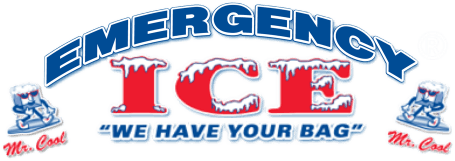Declared by our proud partner, The International Packaged Ice Association (IPIA), “ice is food”; because of that we dedicate our ice production to be clean and safe for human consumption and use. As consumers, we use ice every day to instantly chill our beverages, keep our drinks and perishable foods cold while on the go, and to make fun frozen treats during the heat of summer. One great factor of consuming ice cold frozen treats is that we burn calories when we consume them. How so? Well, the body requires a certain amount of energy to melt the ice and bring it to the body’s temperature so it then can be digested properly.
The energy the body uses to break down ice and bring it to body temp for digestion is metabolic energy, which could also be referred to as calorie burning. If we take the fact that the body burns calories to bring frozen items up to body temperature to digest them, then we are taking in fewer calories than what the frozen treat is actually calculated at. Have you looked at the nutritional facts of a bottle of water recently? It’s all zeroes; there are zero calories, zero grams of fat, zero grams of carbs, zero grams of cholesterol, and so on. So when we drink water, we are not taking in any calories or fat or carbs, not even one. Therefore, if our bodies require a certain amount of metabolic energy to heat up ice, which contains zero calories, we are actually consuming a negative amount of calories; the ice cube diet equals negative calories.
Here is how the ice cube diet works: If we consume 1 quart of ice-
- -A certain amount of metabolic energy is needed to bring ice from freezer temperature to thfreezing point (-4°F to 32°F); we burn 20 calories per quart of ice.
- -Our bodies require a reasonable amount of metabolic energy to melt ice (32°F to liquid); we burn 80 calories per quart of ice.
- -A certain amount of metabolic energy is needed to bring liquid water to body temperature (32°F to 98.6°F); we burn 40 calories per quart of ice.
While this is an approximation and due to the fact that each person’s metabolism is unique, when we consume about one quart of ice, our body will burn about 140 calories. Because ice has zero calories and that eating ice burns calories, we can safely calculate ice to have a negative calorie count (0–140=-140). Eating one quart of ice equals negative calorie intake; therefore, ice is a negative calorie food.
If you are interested in consuming more ice for a negative calorie intake, consider an ice shaver or use the crushed ice option on your ice machine at home. Then, cool off and enjoy some crushed or shaved ice pieces. If you’d like a little bit of flavor, just add a squirt of your favorite calorie free water enhancer or diet iced tea. If you have any other good ideas for the ice cube diet, let us know on Facebook or Twitter.
